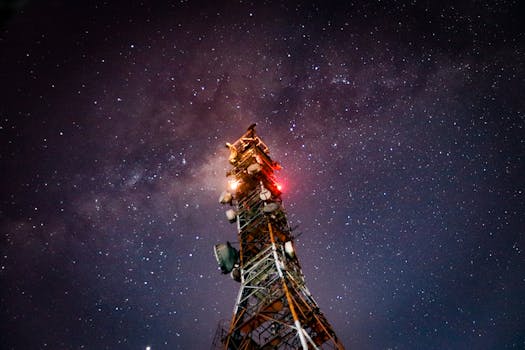
MEO Satellites: Revolutionizing Global Connectivity with Medium Earth Orbit Technology
MEO satellites, or Medium Earth Orbit satellites, are a type of satellite that operates at an altitude of approximately 2,000 to 36,000 kilometers above the Earth’s surface. This range is higher than Low Earth Orbit (LEO) satellites but lower than Geostationary Earth Orbit (GEO) satellites. MEO satellites are designed to provide a unique combination of global coverage, high bandwidth, and low latency, making them an ideal solution for a wide range of applications, including telecommunications, navigation, and Earth observation.
The use of MEO satellites is becoming increasingly popular due to their ability to offer faster and more reliable connections than traditional GEO satellites. MEO satellites have a lower signal delay than GEO satellites, which can be up to 250 milliseconds, and a higher signal strength, resulting in better performance and reliability. Additionally, MEO satellites can provide a higher level of security and resilience than LEO satellites, as they are less susceptible to interference and jamming.
History and Development of MEO Satellites
The concept of MEO satellites dates back to the 1960s, when the first satellites were launched into medium Earth orbit. However, it wasn’t until the 1990s that the technology began to gain traction, with the launch of the first commercial MEO satellite constellation, the Iridium system. Since then, several other constellations have been launched, including Globalstar, O3b, and OneWeb, each with its own unique characteristics and applications.
Today, MEO satellites are being used for a wide range of applications, including mobile communications, broadband internet, navigation, and Earth observation. The development of new technologies, such as advanced propulsion systems and solar panels, has made it possible to build more efficient and cost-effective MEO satellites, further increasing their attractiveness to satellite operators and users.
Applications and Benefits of MEO Satellites
MEO satellites have a number of benefits that make them an attractive solution for a wide range of applications. One of the main advantages of MEO satellites is their ability to provide global coverage, with a single satellite able to cover up to one-third of the Earth’s surface. This makes them ideal for applications such as mobile communications, where a large coverage area is required.
MEO satellites also offer high bandwidth and low latency, making them suitable for applications that require fast and reliable data transfer, such as broadband internet and video streaming. Additionally, MEO satellites can provide a high level of security and resilience, as they are less susceptible to interference and jamming than other types of satellites.
Challenges and Future Developments
Despite the many benefits of MEO satellites, there are also several challenges that need to be addressed. One of the main challenges is the high cost of launching and operating a MEO satellite constellation, which can be prohibitively expensive for many organizations. Additionally, MEO satellites require complex and sophisticated technology, including advanced propulsion systems and solar panels, which can be difficult to develop and deploy.
However, despite these challenges, the future of MEO satellites looks bright. With the development of new technologies, such as reusable launch vehicles and advanced satellite designs, the cost of launching and operating MEO satellites is expected to decrease, making them more accessible to a wider range of organizations. Additionally, the increasing demand for global connectivity and high-bandwidth applications is expected to drive the growth of the MEO satellite market, with several new constellations planned for launch in the coming years.






